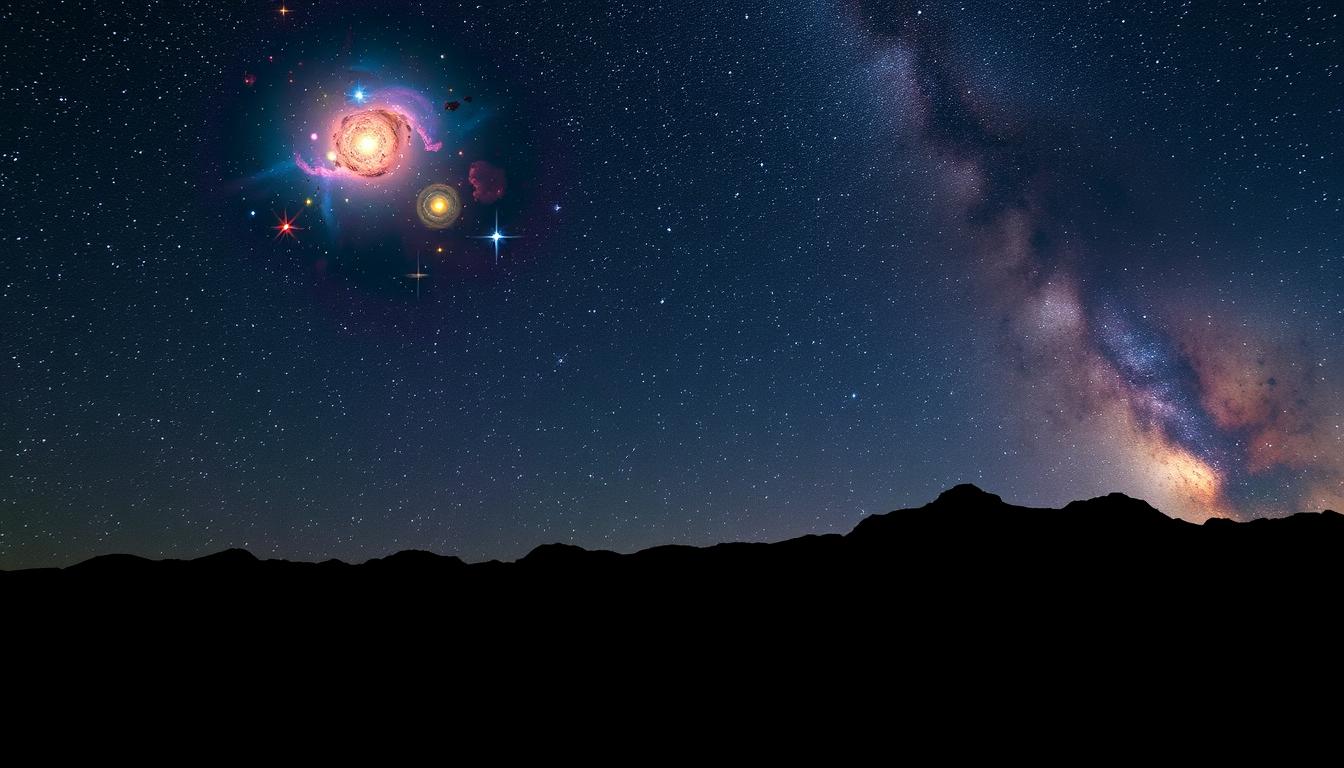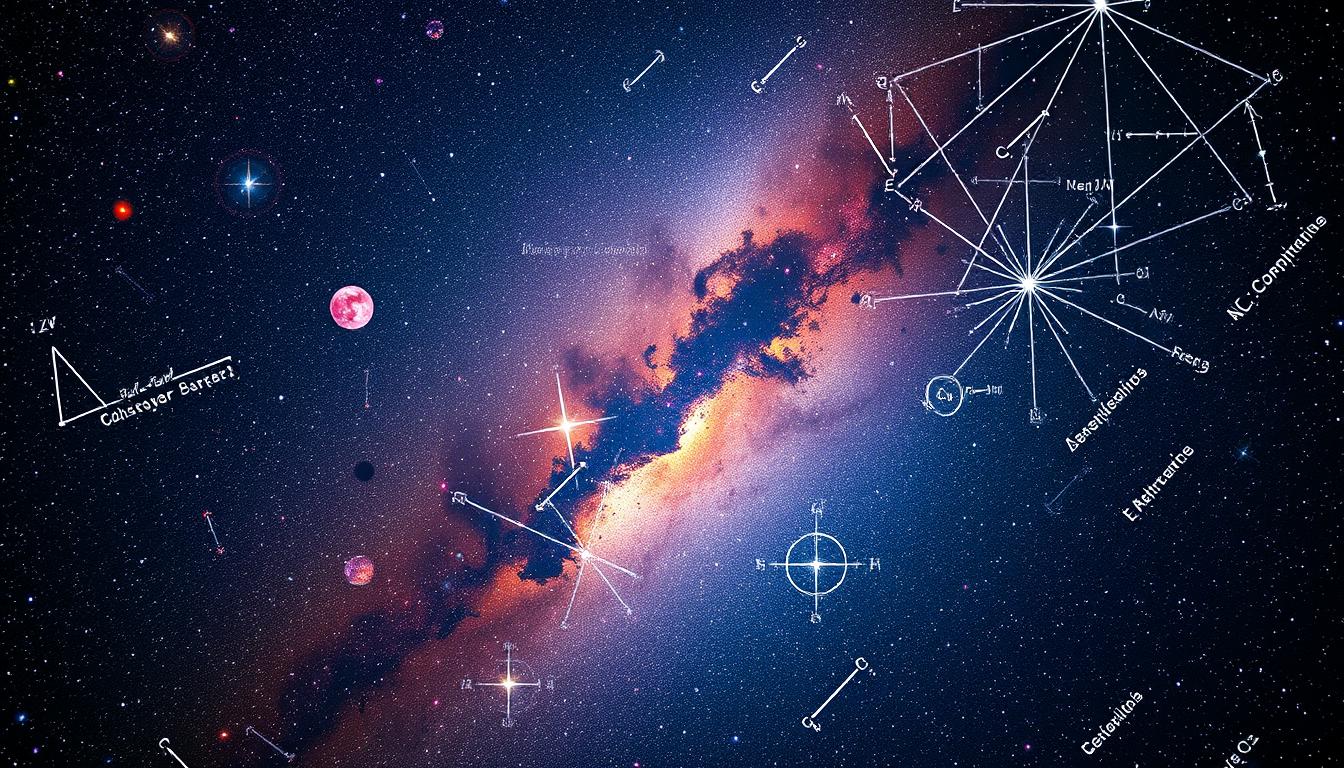Do you know we mapped 1.5 billion celestial objects in the Milky Way galaxy over 13 years? The VISTA telescope at the Paranal Observatory in Chile was used for this. This huge survey started in 2010 and collected 500 terabytes of data, revealing the details of our Galaxy. The study was published in Astronomy & Astrophysics and involved astrophysicist Roberto Saito from Brazil’s Universidade Federal de Santa Catarina. This was a mix of astronomy and astrophysics working together-a great example if you ask me. You see how astronomy and astrophysics are used together? But what is the difference between astronomy vs astrophysics?
Check this out, too: What is the Fermi Paradox? Where are all the Aliens?
Astronomy and astrophysics are two scientific fields that explore the universe. That’s why when you try to compare astronomy vs astrophysics, it might get confusing. In essence, both of these study areas study celestial objects and phenomena. They just study them from different angles with different methods. Astronomy focuses on observing and recording the details of stars, planets, and galaxies. However, astrophysics works on the physics of these objects, what controls them, how they move, and how they work.

Even though they have different focuses, astronomy vs astrophysics often work together. Astronomers use telescopes and imaging to collect data and study the universe. Then, astrophysicists use the data from astronomers to create theories and simulations. Their main goal is to help understand the universe.
Basics of Astronomy: What is Astronomy?
Before I start comparing astronomy vs astrophysics, I want to briefly talk about these studies separately. Astronomy is the study of the universe and understanding the universe as a whole. It’s a field that tries to understand the cosmos through careful observations and math. Astronomers work hard to learn about the universe, from tiny particles to huge structures.
The European Southern Observatory’s (ESO) VISTA telescope has been in Chile since 2010. It has a special infrared tool called VIRCAM. Over 13 years, it mapped the Milky Way, finding 1.5 billion objects like stars, planets, and more. This is part of astronomy, and it is quite important in shaping the universe. After all, everything starts with an observation.

Key Areas of Focus in Astronomy
Astronomers can be either observational or theoretical. Observational astronomers study objects directly and analyze data. They use telescopes to study stars and galaxies. Theoretical astronomers, however, create models of things we can’t see. They use math and computers to understand the universe. Like theoretical physics, it works on theories of things we know to exist or are real. They study planets, stars, galaxies, and cosmic events like supernovae.
Basics of Astrophysics: What is Astrophysics?
Astrophysics is a branch of science that mixes physics with the study of space. It tries to understand the universe by using physics to study stars, galaxies, and more. It focuses on the physical processes of the universe and how the universe behaves.

Astrophysicists apply gravity, thermodynamics, and nuclear physics to explain how stars and planets form and change. They mix theory with data to find the laws of the universe. Mathematical models are key in astrophysics. Based on physics, these models help scientists predict and test their theories. This back-and-forth between theory and observation proves our theories in two different ways and also reduces the chance of error.
Key Areas of Focus in Astrophysics
Astrophysics covers many topics, each looking at different parts of the universe. Some main areas:
- Black holes: Scientists study the gravity around black holes and how they affect matter and light.
- Supernovae: The explosions of massive stars are studied to learn about star life cycles and element creation.
- Dark matter and dark energy: Researchers look into mysterious substances that make up most of the universe, causing it to expand.
- Origin of chemical elements: Astrophysics explores how stars and cosmic events create chemical elements.
- Cosmological theories: Scientists work on theories about the universe’s start and evolution, like the Big Bang and the multiverse.
Astronomy vs Astrophysics: What is the Difference Between Astronomy and Astrophysics?
By now, you can see that astronomy and astrophysics are two fields that study the universe. They look at everything from tiny particles to huge cosmic structures. But they have different ways of studying the universe. They essentially need to work together, though. So, when comparing astronomy vs astrophysics, you should keep in mind that one exists to help the other.
Similarities Between the Two Disciplines
Both fields study stars, planets, galaxies, and the universe. They use telescopes and other tools to gather data. For example, there is a recent study that mapped the Milky Way. According to the study, there are 1.5 billion objects in our Galaxy. This an astronomy study led by Dante Minniti, which gave us a better view of the Galaxy, and now astrophysicists can start working on this study. The study even showed us the supermassive black hole at the center.

Differences in Approach and Focus
Astronomy mainly focuses on observing and cataloging objects. It looks at things like how far away stars are and how fast galaxies move. Their job is to observe, watch, and see what is happening. They don’t use mathematics or other things to understand what they are seeing. They catalog what’s visible.
Astrophysics, however, dives deeper into why things behave the way they do. It studies the physics behind stars and galaxies. For example, it looks at a star’s temperature and how old it is. When an astronomer finds a new star, Galaxy, or planet, the astrophysicists try to understand why that object is there, how old it is (I have an article here where I talked about how old is the oldest planet which explains this process briefly), and how it moves.
Examples Illustrating the Differences Between Astronomy vs Astrophysics
Let’s say we’re studying a star system. An astronomer would measure its brightness and how fast it moves. They’d also look at how the stars orbit each other.
An astrophysicist, on the other hand, would use this data to figure out the star’s temperature and age. They’d want to understand its physical state and how it evolved.
For a galaxy like NGC 974, an astronomer might just describe its appearance and location. But an astrophysicist would study its redshift and luminosity to learn more about it.
Overlap Between Astronomy and Astrophysics
Astronomy and astrophysics also overlap in other ways. Astronomers collect data that astrophysicists use to create theories. For example, astronomers might find a planet far away. Then, astrophysicists use physics to figure out what the planet is like.
In a vice-versa situation, astrophysicists might predict something new in the universe. Then, astronomers look for it with their tools. The black hole at the center of our Galaxy was a good example of that. The picture that we took started with the work of astrophysicists predicting and astronomers looking for that prediction.
Astronomy and astrophysics have made big discoveries working together. Both of these study areas helped find things like gravitational waves and studied the cosmic microwave background. These areas are also the reason we know what we know about the universe.
Conclusion
Astronomy and astrophysics are two fields that help us understand the universe. So, when we compare astronomy vs astrophysics, we look at the same thing but use different methods to study the same things. Astronomy looks at the stars and planets, while astrophysics studies how they work.
Both fields aim to learn more about the universe. Astronomers and astrophysicists work together on big questions. For example, the CHEESE study looks at life on other planets. Surveys like the Dark Energy Survey also show us new things about space.
FAQ
What is the main difference between astronomy and astrophysics?
Astronomy looks at the stars and planets, describing what we see. Astrophysics digs deeper, trying to understand why things happen in space using physics. So basically, astronomy vs astrophysics is the difference in how we study things; one looks at it and tries to make sense of it, and the other uses physics to make sense of it.
What are the key areas of focus in astronomy?
Astronomy studies planets, stars, galaxies, and big cosmic events. Astronomers watch the sky and study data to learn about the universe.
What are the key areas of focus in astrophysics?
Astrophysics explores black holes, supernovae, and dark matter. It also looks into the Big Bang and the multiverse. Astrophysicists use math to explain these mysteries.
How do astronomers and astrophysicists work together?
Astronomers use astrophysics to understand what they see. Astrophysicists use astronomy to test their theories. They often work together, helping each other understand the universe.
What is cosmology, and how does it relate to astronomy and astrophysics?
Cosmology is about the universe’s start, growth, and end. It connects with astrophysics by studying the universe’s beginnings and how stars and planets form. This shows how astronomy and astrophysics are closely linked.